Let’s Take a Look at the Cultural Relics Related to Snakes

Friends who are curious about Chinese history might have a question: why is it so incredibly hard to get tickets to Chinese museums? Have you ever planned a trip to China, only to find that the crowds are overwhelming or you just can’t get museum tickets, leaving you feeling regretful for a long time? If you want to learn about Chinese history by visiting museums, you’ve come to the right place. Now, silkdivas has put together some snake – themed cultural relics from the Shaanxi History Museum, to give you an insight into how the Chinese view snakes.
Snakes are not only ancient creatures but are also widely distributed around the world. In Chinese folk culture, the snake is a symbol of good luck and beauty, and it is one of the earliest totems of the Chinese nation. As early as 8,000 years ago in the Neolithic Age, the image of the snake appeared on cultural relics. Judging from the existing remains, the image of the snake mainly appears on cultural relics such as pottery, bronze ware, porcelain, eaves tiles, and bronze mirrors. From the perspective of traditional cultural significance, these cultural relics related to the image of the snake can probably be classified into snakes as totems, snakes that transform into dragons, snakes of creation, snakes of good fortune, snakes as zodiac signs, snakes representing directions, snakes as ritual vessels, and snakes of love.
I. Snakes as Totems
In the exhibition line of the Shaanxi History Museum, there is a red pottery jar with appliquéd and molded snake patterns (红陶贴塑蛇纹罐). This cultural relic dates back to the Yangshao Culture period and was unearthed in 1981 in Nandian Village, located in the eastern suburbs of Xi’an. Made of red pottery, it has a large mouth and a small base in shape. On both sides of the jar’s body, there are two molded snake shapes. The two snakes are coiled around the jar in opposite directions, with their heads sticking out of the jar’s mouth and facing each other. The simple yet vivid design makes the snakes look lifelike. The Yangshao Culture site in Nandian Village, where this cultural relic was unearthed, is about 5 kilometers north of the Banpo Site.
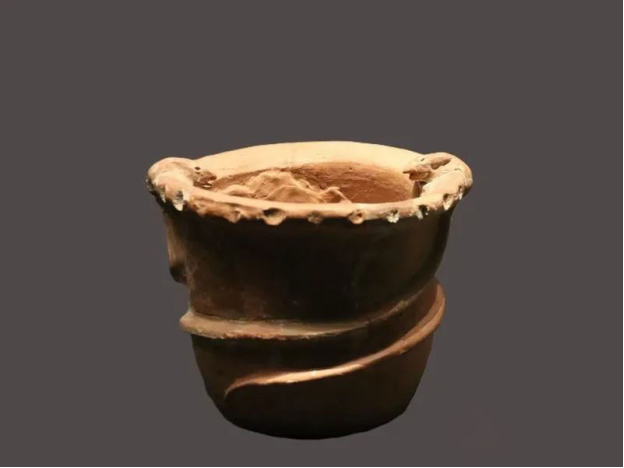
The period when the ancestors lived at the Yangshao Culture site in Nandian Village was during the middle of the Holocene epoch. At that time, the climate was warm and humid, with a large amount of precipitation. Not only was the Chan River (浐河) larger in volume than it is now, but the river valley was also lush with forests and abundant in birds and beasts. The ancestors could not only go fishing in the Chan River but also develop primitive agriculture on the fertile land formed by the river’s siltation. They could also hunt in the thickly forested river valley. However, with venomous snakes and fierce beasts roaming around, it was not surprising that people got hurt.
The appearance of such vivid snake images on the cultural relics indicates, on the one hand, that snakes were animals that the ancient ancestors frequently came into contact with in their daily production and life, leaving a deep impression on them. On the other hand, it also reflects the good ecological environment at that time. This red pottery jar with appliquéd and molded snake patterns is not only a treasure of the Yangshao Culture but also a crystallization of the wisdom and art of the ancients.
Bai Lu (白璐), the deputy section chief of the Cultural Relics Preservation Department of the Shaanxi History Museum, said about snakes, “Snakes can move quickly, climb high, squeeze through cracks, and enter holes without limbs. They are incredibly agile, giving people a sense of mystery. People gradually developed from fear and awe to worshiping snakes as totems.” Expert Yang Shuming (杨曙明) said that judging from cultural relics such as the red pottery jar with appliquéd and molded snake patterns unearthed from the Yangshao Culture site, snakes were regarded as objects of worship by the ancient ancestors, and some might even have served as tribal totems.
II. Snakes as a Zodiac Sign
In the Shaanxi History Museum, there is a set of painted pottery figurines of the Chinese zodiac, where the figurine of the snake is placed together with that of the dragon. It is worth mentioning that snakes actually have no hands. So, in this particular depiction, the snake uses its magical power to create long sleeves like those of Hanfu.
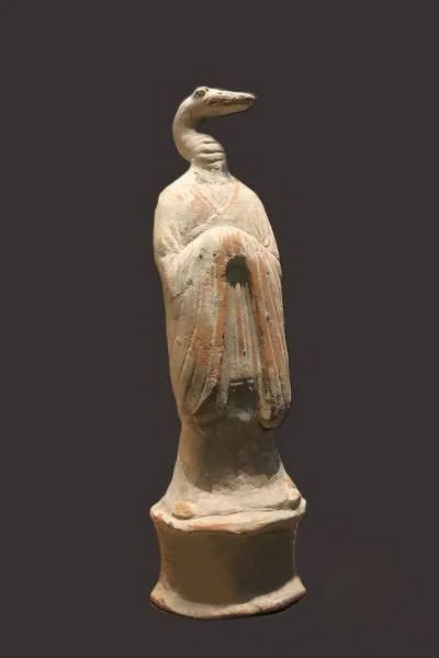
Bai Lu, the deputy section chief of the Cultural Relics Preservation Department of the Shaanxi History Museum, introduced that this set of painted pottery figurines of the Chinese zodiac was unearthed from the joint burial tomb of Sun Chengsi (孙承嗣), a regular candidate for the Ministry of War in the Tang Dynasty, and his wife, Mrs. Gao, in the southern suburbs of Xi’an. The entire set of figurines is complete, with a height ranging from 21.5 to 25.8 centimeters. With their vivid shapes, they are truly rare art treasures.
All the twelve zodiac pottery figurines have the heads of beasts and the bodies of humans. They all stand upright with their heads held high, clasping their hands in front of them as a gesture of respect. Their hands are hidden inside their sleeves, and they are dressed in long robes with crossed collars and wide sleeves that reach the ground. These figurines have a certain arrangement order in the tomb. They are placed at the four corners of the tomb chamber, with three figurines on each of the east, south, west, and north sides. Starting with the rat and ending with the pig, they are arranged in a clockwise direction according to the positions of “zi” (rat) in the south and “wu” (horse) in the north. The purpose is to have them take turns on duty to guard the tomb owner.
Since the Sui and Tang dynasties, these special pottery figurines began to appear in the tombs of prominent families. Most of them were made of pottery, while some were made of iron or stone. In the Song Dynasty, porcelain zodiac figurines emerged. However, after the Song Dynasty, the custom of placing zodiac figurines in tombs was no longer prevalent.
III. Snakes Representing Directions
In ancient China, the four divine beasts, namely the Azure Dragon, the White Tiger, the Vermilion Bird, and the Black Tortoise (a combination of a tortoise and a snake), were collectively known as the “Four Symbols”. They were the result of the ancient people’s worship of the constellations. You can see the “Four Spirits Eaves Tiles” in the Shaanxi History Museum, the Xi’an Museum, and the Xi’an Museum of Qin Bricks and Han Tiles.
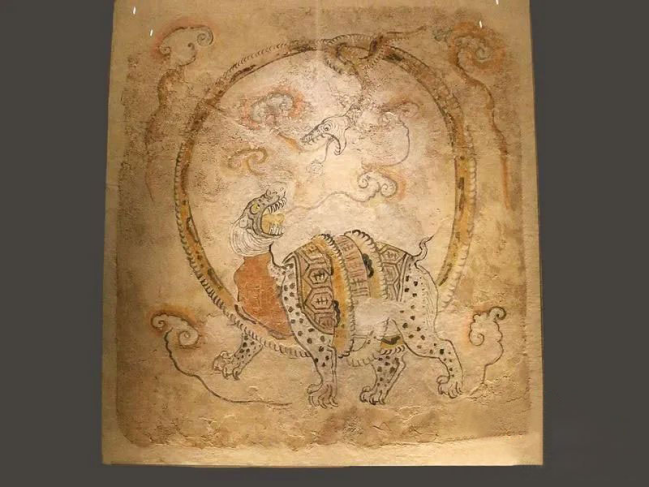
Ancient tombs also often used the “Four Spirits” as the theme for murals, and they were generally painted in the corresponding directions. The Black Tortoise mural discovered in the joint burial tomb of Han Xiu (韩休), a prime minister in the prosperous Tang Dynasty, and his wife depicted the images of the tortoise and the snake very realistically. When this Black Tortoise mural was discovered, it had already been damaged by tomb raiders, and the fragments of the mural were scattered on the ground of the tomb chamber. By comparing the photos taken by the tomb raiders, the cultural relic protection staff pieced together more than a thousand fragments of the mural extracted from the archaeological site and pasted them back in their original positions. After nearly a year of restoration, the original appearance of the Black Tortoise mural was finally restored.
Experts say about snakes: In the ancient Chinese theory of directions, the Azure Dragon represents the east, the White Tiger represents the west, the Vermilion Bird represents the south, and the Black Tortoise represents the north. In the theory of the “Wuxing”, the green color in the east corresponds to wood, the white color in the west corresponds to metal, the red color in the south corresponds to fire, the black color in the north corresponds to water, and the yellow color in the center corresponds to earth. The Black Tortoise often appears in the form of a combination of a tortoise and a snake. In the theory of the Five Elements, it is associated with water, symbolizing the Great Yin among the Four Symbols, the winter season among the four seasons, and also the northern part of the celestial realm.
IV. Snakes as Ritual Vessels
In the Shaanxi History Museum, there is a snake – headed dagger – axe from the Shang Dynasty on display. Bai Lu, the deputy section chief of the Cultural Relics Preservation Department of the Shaanxi History Museum, introduced that this snake – headed dagger – axe was unearthed in Yantou Village, Suide County, Yulin City, and it has typical cultural characteristics of the northern nomadic ethnic groups. The dagger – axe was a relatively rare short weapon during the Shang and Zhou dynasties. It could be used for stabbing as well as chopping, similar to an early – stage short sword. This dagger – axe might have been a tableware or a daily necessity. The handle of the dagger – axe is in the shape of a snake’s head, with the snake’s snout exaggeratedly protruding. The overall image is vivid and lifelike, making it a treasure among bronze dagger – axes. Previously, we talked about a blog on how to carry weapons while wearing typical Chinese outfit. Those who are interested can search for it in our previous blogs.
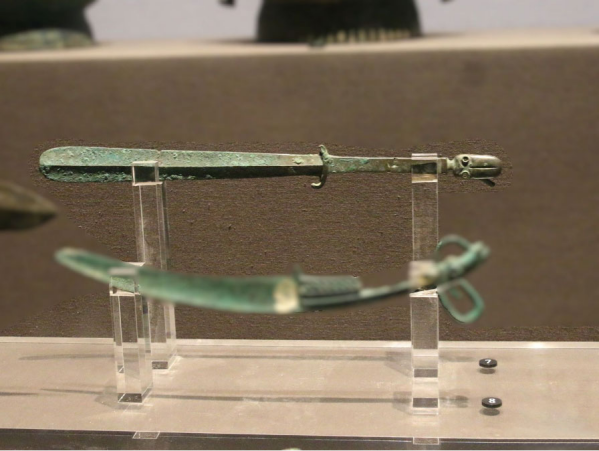
Experts say about snakes: “During the Shang and Zhou dynasties, the image of the dragon became increasingly rich, and the snake patterns on bronze wares gradually lost their status as the main patterns and became subordinate decorative patterns. However, this did not prevent the appearance of exquisite snake shapes on the wares.” Yang Shuming (杨曙明) introduced that for example, on the neck of the famous bronze He Zun, there are banana leaf patterns and snake patterns. On the bronze wares of the Spring and Autumn Period and the Warring States Period, coiled chi – dragon patterns and coiled hui – snake patterns were popular. During this period, both the shapes of dragons and snakes were favorite decorations of people. Similar to the dragon, snake elements were often used on weapons. People believed that the agility and ferocity of snakes could help them achieve victory. This bronze dagger – axe displayed in the Shaanxi History Museum was not something that ordinary people could use in the Shang Dynasty. It should have had the nature of a certain ritual vessel.
V. Snakes as a Symbol of Love
On the official website of the Shaanxi History Museum, you can find a cultural relic that is not currently on display – a Song Dynasty glazed pottery figurine with a human head and a snake body. Its image features two human heads and a snake body intertwined together. One end is in the shape of a man, and the other end is in the shape of a woman. It is 27 centimeters long, 12 centimeters high, and weighs 0.697 kilograms. It is understood that similar cultural relics have been unearthed in many places across China.
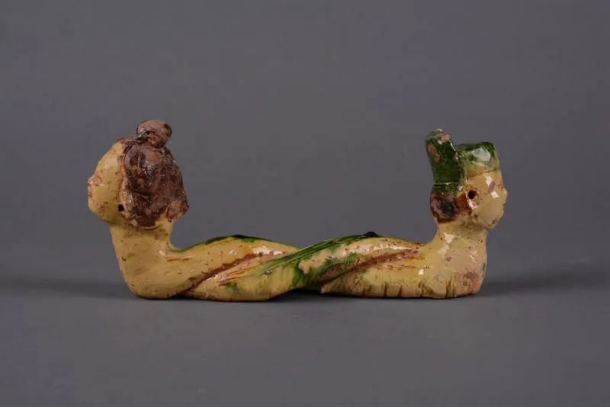
Experts say about snakes: “In folk culture, the snake is also a symbol of the pursuit of love and happiness, which is mainly reflected in the folk story The Legend of the White Snake. The opera character pillows related to The Legend of the White Snake prominently express this. Although the human – head and snake – body figurines with two heads unearthed in many places can be interpreted in connection with figures like Fuxi and Nüwa, as well as the ideas of immortals and yin and yang, they can also be associated with the lives of ordinary people and classified as symbols of love in the form of snakes.” However, perhaps due to my limited cultural knowledge, when I saw this cultural relic, I just thought it was a bit strange and charmingly ugly. I really couldn’t figure out how it could be related to love. Maybe it’s because of the presence of a man and a woman on it.
This kind of shape can actually be found in many tombs. The purpose of this kind of shape is to serve as a tomb guardian beast, so as to protect the tomb of the deceased from being damaged.
Summary
After looking at so many cultural relics, some are mysterious, some are cute, some are solemn, some are fierce, and some are even a bit strange. The image of the snake is indeed diverse and ever – changing in China. The snake is like a mirror reflecting the respect and understanding of the ancient Chinese people towards heaven and earth. It has silently protected humanity for thousands of years.
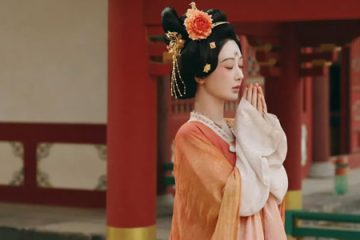
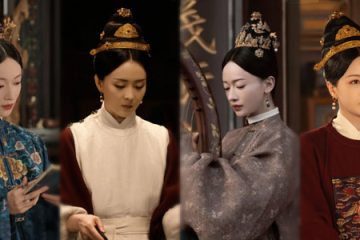
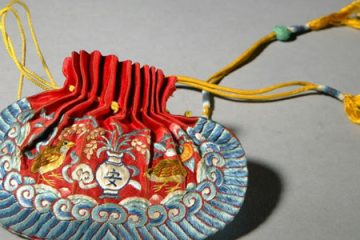
0 Comments